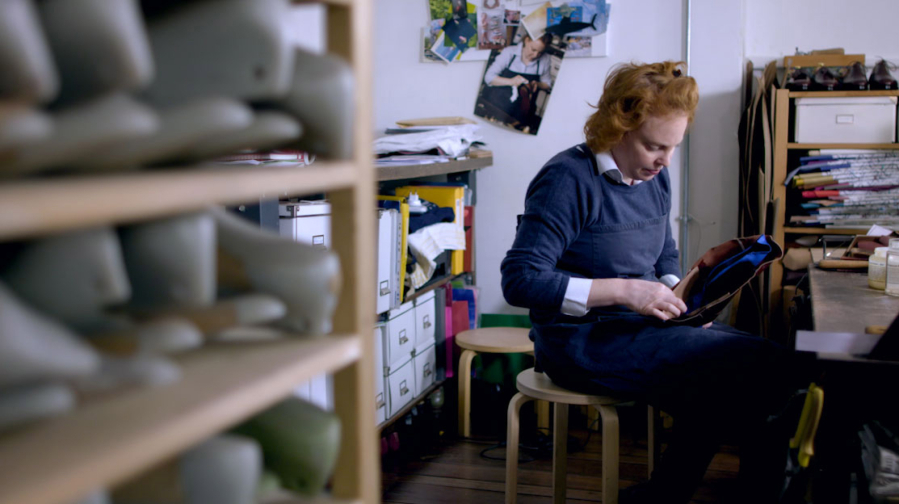The most challenging step in making a bespoke shoe, cobbler Vivian Saskia Wittmer says, involves something that you won’t wear, ever.
It’s creating what’s known as the “last,” the foot-shaped block that gives the shoe its shape. “Nobody shows you how to make a last, really, so you have to train it by yourself,” says the German-born Wittmer, 45, in her workshop in Florence, Italy, a city of shoemaking royalty.
Wittmer makes about four pairs of shoes per month at her three-person workshop, called Saskia, starting at about $3,540 per pair, including the last, which always stays at the cobbler. (That means customers have to return to the same shoemaker to use it again, or pay for another to be made elsewhere.)
To make the last, Wittmer starts by recording simple measurements while taking notes and observations on the customer’s needs: Does the heel of his shoe often slip off? Is additional support needed in a certain area? Is the back part of the foot particularly narrow?
Those important data points go into creating the last, which traditionally was made with wood but now is composed of hard plastic with bits of cork she carves into shape.
Wittmer will ask where he will wear the shoe. If the customer will be walking around in Dubai, she’ll select a very light material for the upper part of the shoe, something that might be too thin for London weather. If the customer lives in Moscow, she knows the shoe will need a rubber sole that can stand up to harsh weather and snow.
When she started in the male-dominated industry, people thought Wittmer wouldn’t physically be up to the job, with all the pulling, tugging, stretching, and tying that goes into the work. “When I started, everybody looked at me and said, ‘This lady is going to close down in a year,'” she says. “It’s not easy. You really have to use your elbows.”
She opened her workshop nearly 18 years ago just west of the heart of Florence. “I didn’t want it to have tourists every day coming in,” she says.
One pair of shoes takes about three weeks’ work, though this doesn’t include time when the shoes must dry, or waiting periods for materials. Customer fittings also add to the timeline. The process, from order to delivery, takes six to eight months. Repeat customers will get their shoes faster.
“You really need to have strength,” she says. “You can feel, when you pull, that it stops at a certain point, and then the stitch is finished.”
She applies cork in the front for cushioning and then glues on the sole. The heel is the final step. Built out of single layers of leather, the heel is glued and nailed on, then shaped, sanded, and burned so all the pores are closed. It is then painted and burned again with wax. “Really, no water can go in,” she says.
Clients can customize everything down to the color of the shoe lining, which can provide a private thrill. “It’s only you who sees it, nobody else,” she says. “Maybe you really want something which gives you a kick in the morning.”
Wittmer loves when customers are happy with their shoes the moment they put them on, and she knows the leather will build character over time.
“A shoe reflects the person who is wearing it,” she says. “The model they choose, the leather they choose, the color they choose, and how they wear it.”



